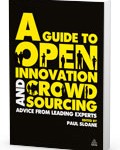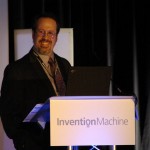Jun08
P&G on the Benefits of Open Innovation #WIF11
Point: Open innovation is much more cost-effective than internal R&D
Story: Larry Huston, formerly Innovation Officer at Procter & Gamble, spoke at the World Innovation Forum on June 8, 2011. Huston praised open innovation as a way for big companies to speed their innovation and time to market. Huston said that open innovation efforts give companies a 2x return compared to developing the innovation in-house because of risk reduction. The reason, Huston said, is  simple: the technology is already proven to work; it just needs to be scaled or adapted. In short, with open innovation a new technology has a much lower risk of failure than starting internal R&D from scratch. Also, given the realities of corporate life, internal R&D people aren’t just doing innovation all the time — they have administrative work and meetings — which means that internal innovation is much less efficient than open innovation.
simple: the technology is already proven to work; it just needs to be scaled or adapted. In short, with open innovation a new technology has a much lower risk of failure than starting internal R&D from scratch. Also, given the realities of corporate life, internal R&D people aren’t just doing innovation all the time — they have administrative work and meetings — which means that internal innovation is much less efficient than open innovation.
Huston related the story of an internal P&G employee who had the idea of printing text and designs on Pringles potato chips — designs like Disney characters or trivia questions. The employee made a very thin potato dough and ran it through an HP printer to demonstrate the idea. But P&G needed edible food dyes that wouldn’t clog the printer or a printing technology that could handle edible food dyes.
So P&G approached a big printer manufacturer to work together with P&G to come up with a way to print on potato chips. The two big companies spent a year in meetings trying to hammer out the intellectual property (IP) rights issue. The printer company wanted all the IP, even though the two companies would be developing it together. P&G even offered to give the partner the patents if P&G could own only the one application of printing on potato chips. If the partner company then wanted to sell the technology to McDonald’s to print on hamburgers, they could. But still the other company did not agree to those IP terms.
Exasperated by the slow pace of the negotiations, P&G wrote a public brief describing the technical problem to be solved and sent it out worldwide. An innovation network in Europe picked it up, and the brief landed on the desk of a professor in Bologna. The professor, as it turns out, had inherited a bakery. He had dabbled with the equipment and created and edible food dye that could be printed on cakes and cookies. P&G licensed the IP from him and launched Pringles Prints in eight months, compared to spending one year just discussing IP with the large company. Within one year, the new product grew P&G’s revenues 14% — a very impressive result given the size of P&G.
Publicizing its R&D needs was a big change for P&G. In the past, P&G kept its R&D efforts closely guarded. “We were afraid to share our technology needs,” Huston said. “We thought competitors would read our briefs and launch their product first. But not once did that happen, out of hundreds of briefs” The reality, Huston said, was “Companies work on what they think the problems are. Reading a brief, they don’t see the end product, and they’re not likely to reorient their efforts as a result. Once they see the product in the market, then they’ll respond.” Instead, Huston advocated, “let the world know what you want and that your door is open to ideas from the outside.” In response to a question from the audience, Huston elaborated: “Half of our briefs have our name on them, and those get many more responses. Other briefs do not have our name.” Those briefs couch the request in more scientific terms, solving the underlying problem rather than explaining the consumer product application.
Action:
- Don’t be afraid to advertise your R&D needs in order to attract outside innovators. Competitors are unlikely to reorient their own thinking to follow you.
- If you’re still concerned about competitors taking your nascent idea, don’t put your company name on the brief, and phrase it in terms of the underlying science to be solved
- Look for smaller, nimble open innovation partners with early-stage prototype technologies.
- Innovate faster by leveraging proven technologies created by third parties.
- Focus on lower-risk adaptation and scaling of existing external technologies rather than high-risk creation and scaling of unknown internal technologies.
For more information: World Innovation Forum
1 Comment »Case study, Growth, How-to, Innovation, New Product Development, open innovation











